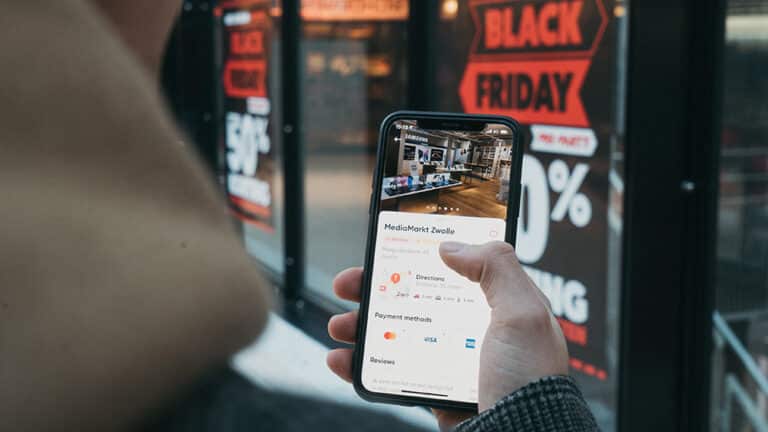The social platform was launched in early 2010 and today Pinterest has over 442 million global users every month. Pinterest is mainly used to get inspiration in the form of pictures, it can be for your upcoming renovation, wedding or a dinner party. The users can upload photos themselves and share with others to then create pin boards – as a form of digital bulletin board. The platform is dominated by female users, the majority is between 29-34 years old. The United States has the largest number of users, which is 97 million according to the latest statistics from Hootsuite.
Why advertise on Pinterest?
For ten years, we have been able to use paid marketing in social media. Advertising is a cost-effective way to reach more than your followers, and generating new leads. Advertising in social channels has opened up new business opportunities by contributing to the growth of e-commerce.
Through Pinterest’s functions, you already have a buying-oriented target group and you can target your ads through the Pinterest search function similar to Google’s search engine. This opens up opportunities for you as an advertiser. Like other advertising tools, you can choose the budget you want to set for your campaign. You can set an objective and through this achieve your goal as brand awareness until lead generation.
There are also alternatives for you as an E-merchant by Pinterest being connected to Shopify in 2020 and making it possible to connect the store directly with the platform.
Through Pinterest’s advertising tool, you can create target groups through demographics, geography, age, gender and thus increase your reach and at the same time ensure that you reach the right target group.
Get started with Pinterest advertising.
To be able to get started with your advertising and get access to Pinterest’s advertising tools, you need to create a business account, and then get started with an advertising account in Pinterest business where you will create your first ads.
To then measure your result of your advertising is a recommendation is to install a pixel, in order to have the opportunity to follow your target group through the customer journey.

Step by step – Advertising on Pinterest
Step 1 – Choose an objective
Like other channels, you need to choose the goal of your campaign that can be;
- Brand awareness
- Consideration
- Conversion
- Online sales
Read more about Pinterest’s availability for objectives and ad formats here.
Step 2 – Target groups.
Through Pinterest’s targeting tool, you’ll get help finding the right audience for your ads. How to find the right audience:
Automatic targeting: Based on information from your pin.
Target groups: Find the right audience through information such as age, gender, location and language.
Interests: Reach the audience that is interested in, for example, recipes, interior design or fashion.
Keywords: Reach your target audience by targeting specific search terms.
Customer lists: Reach existing customers who have been in contact with your website, store or content on Pinterest.
Actalike (Lookalike) audiences: You can create these audiences to find other people who have similar behaviors and interests as your existing customers.
Read more about how to set up your audience targeting here.
Step 3 – Budget
You can choose which budget you want to set aside for your advertising, and you choose between the daily budget for your campaign or the lifetime budget, which is the total for the entire period. Depending on which objective that you chose for your campaign, you choose in previous steps, you can choose to set your own bids for your ads or that Pinterest helps with automatic bidding.
Learn more about how to set and edit your bid here.
Step 4 – Format & Placements
The content determines which format or placement you choose on Pinterest and what your goals are with your advertising. These formats are recommended for Pinterest: 2: 3.9: 16 1: 1, to then use these placements to choose from:
Static Pins: Has a picture and is similar to regular pins, but are marked with “sponsored”
Video Ad: Similar static pins but in moving format.
App Installation Ad: Ad that wants the user to install a specific app, without leaving Pinterest.
Carousel Ads: A series of pictures.
Shopping Ads: Display one image / video at a time and allow the user to purchase products they find on Pinterest.
Collection Pins: Displayed with a main image above three smaller images in the flow on mobile devices.
Story Pins: Story Pins appear as a set of multiple videos, images, lists and custom text in a single Pin. Story Pins are only available as an organic format.
Review Pinterest’s product specs here.
Step 5 – Measure your advertising on Pinterest.
Based on what you have set as an objective for your campaign, there are different metrics that’s called KPIs that are interesting to look at. These are some of the most common KPIs:
Cost per action – What is the cost per lead?
Cost per Click – How much does each click on your ad cost?
Frequency – How many times does your audience see your ad per week?
ROAS – What will be your return on advertising costs?
Learn more about Pinterest reporting here.
A/B testing on Pinterest
Same as advertising on Facebook, you can create an A / B test to see what your target audience interacts and is engaged by. You do this by creating two ads that are similar to each other, but you change small details that can be color, copy, language, etc. Then you can evaluate what attracts your audience and optimize your ads.
Summary.
It hasn’t been possible to advertise on Pinterest for as long as in our largest social channels, and this means that there is still low competition compared to the other channels. It enables your business to take ground and be able to advertise cost-effectively in the channel.
In addition, there will be gradually new updates that can develop your advertising. Pinterest recently launched Dynamic Creative which automates your personal ads and makes them blended into the flow and not feel like “advertising”. Pinterest also launched a feature in 2020, that opens up even more conversion opportunities for e-commerce companies. Through “Shop tabs”, private individuals can take pictures of furniture they are interested in, then similar furniture comes up on the platform – a reason why your company should work with organic content on the platform.
Whether you have recently started advertising on Pinterest or have been advertising for a while, you need to give it a try. There are only guidelines – but no conclusion on how to reach your audience with your advertising. So try things out, learn by doing and OPTIMIZE more!
Hope you enjoyed the article. Don’t forget to stay updated by subscribing to our newsletter!





